What Is Strokes Gained In Golf?
You might have heard of the term 'Strokes Gained', but what does it mean? We speak to an expert to find out...
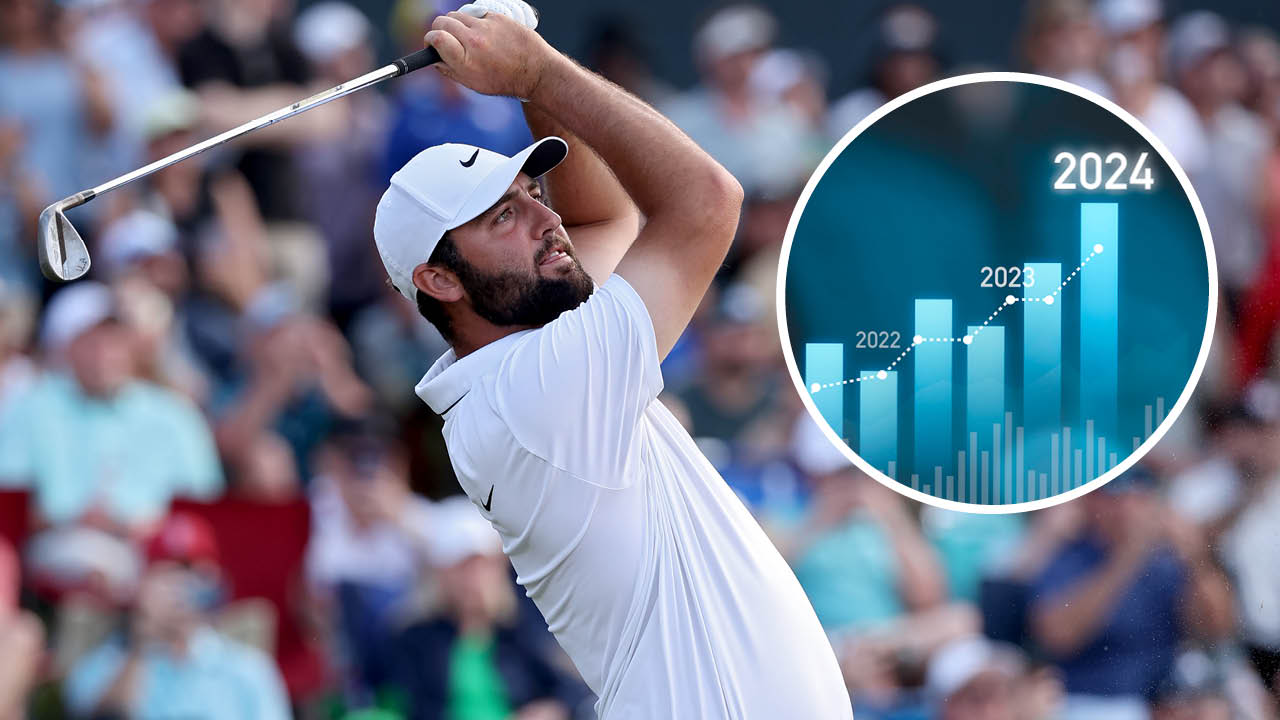
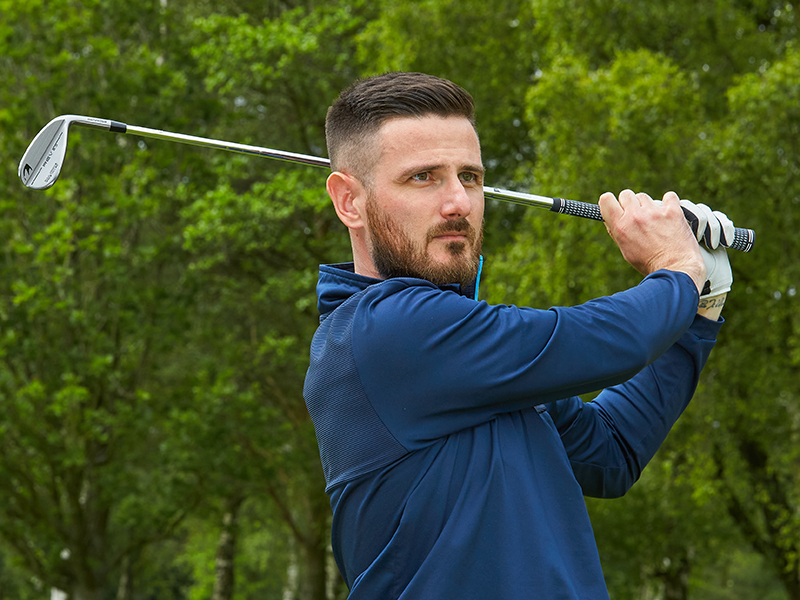
'Strokes Gained' is fast becoming one of the most used terms in the world of golf. It is seen by many as the most definitive marker of player performance at the professional level, and thanks to the latest partnerships and technology it's even moving into the amateur game. But what exactly is 'Strokes Gained'?
To get a better grasp of the term, we spoke with Sal Syed, CEO and Co-Founder of Arccos, a company which integrates automatic shot tracking, with artificial intelligence, to deliver insights that help players maximise their potential.
What Is Strokes Gained?
The simplest way to define Strokes Gained is a method of analysing each facet of a players game in comparison to the rest of the players in the field or at the same level. You can do this across recent performances, or even compare the best players in each statistical category over the past 20 years!
The main categories where the comparison is drawn are off-the-tee, approach, tee-to-green, around-the-green and putting. There is also a useful measure, titled Strokes Gained: Total, which gives an overall indicator based on the player's full game.
For decades, there wasn't a consistently used metric to measure this data, with ShotLink becoming available on the PGA Tour in 2007. Developed by Professor Mark Broadie at Colombia University, the whole philosophy of 'Strokes Gained' came about because the data was made available to academic institutions from that year. Ever since, term has grown in importance.
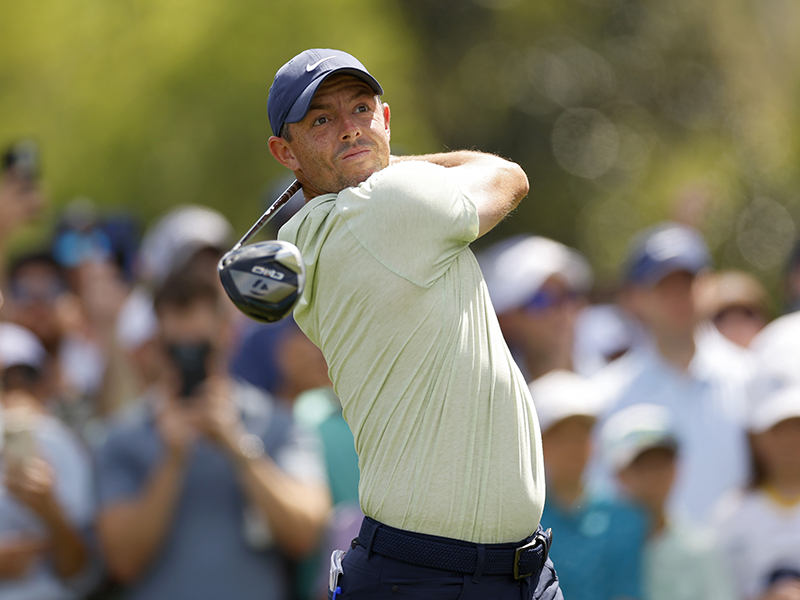
Q. In the simplest way possible, from an Arccos perspective, can you explain what Strokes Gained is, please?
S: Sure. Without getting into the technical details I would say it is the right way to analyse your game. So let's say you are shooting 85 and want to shoot 80. The difference of five strokes from where you are to the average 80 is distributed over various aspects of your game and what Strokes Gaines is able to do is tell you where you are losing the most strokes whether that be putting or whatever.
Get the Golf Monthly Newsletter
Subscribe to the Golf Monthly newsletter to stay up to date with all the latest tour news, equipment news, reviews, head-to-heads and buyer’s guides from our team of experienced experts.
So, in the simplest form, Strokes Gaines is doing the correct analysis on your game to help you understand where your strengths and weaknesses are. Traditional stats in golf can be misleading, so for example they used to look at fairways hit as a good metric for how good a driver of the ball you are, but you could be driving it 150 yards and hitting every fairway, and you know that's not good.
The number of putts is another. You may be two-putting from five-feet, or two-putting from 50 feet, one you are annoyed about, the other you are happy about. So Strokes Gained doesn't look at number of putts, it takes into account how far away did you two-putt from, so it is doing the right analysis for you to understand and breakdown your game.
Let me give you a simple example of an eight foot putt. The average PGA Tour pro makes 50% of their putts from eight feet. So then their expected number of putts from eight feet is 1.5 putts. And so, if you make one putt you gain 0.5 strokes but if you miss it you lost that half a stroke. So for each shot we are assessing how many strokes you are gaining or losing versus the benchmark.
And we at Arccos are able to quantify, aggregate and present that information in a very easy to understand way because in the end it just comes down down to how many strokes did you lose in an aspect of the game.

Q. What are some of the aspects that are more important, or what does Strokes Gained tell us about some misconceptions about the game?
S: Probably the number one misconception is that old saying 'driving for show, putt for dough'. Driving is really important.
If you are a good driver of the golf ball it positions you well and you gain a lot of strokes, and the golf world is certainly realising that. But at the same time, the accuracy is important because if you hit a bad drive and hit a recovery shot, you are losing strokes there because of your drive. If you are punching back out, that's half a shot penalty, so it is not all about distance.
As I mentioned earlier the number of putts is a misconception because it makes people think there putting may need work whereas actually it is approach game or around the green aspects that need practice. Really, the number of putts doesn't tell you literally anything.
Q. How does Strokes Gained account for different courses, because some are obviously harder than others?
S: Well for Arccos, it has so many rounds of shots taken that our algorithms are targeted and take difficulty into account. We also account for different flag positions because holes can play drastically differently dependent on the flag so it is all in the data. So when we develop our Strokes Gained models, we take that into account.
Ideally, in the future for Arccos, I want to take things like rough height, green speeds, weather conditions, wind, wind direction too because those things do have an impact.
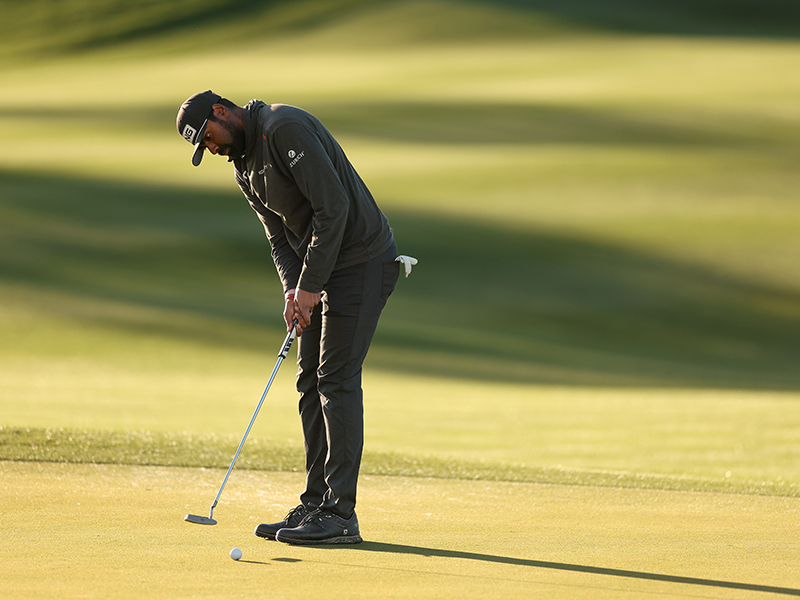
Q. Looking to amateur golf, because Arccos has access to so much data, what would you say is the most common area where people lose strokes?
S: So the reality is everybody is different. Arccos breaks it down into driving, approach, short game and putting, and I would honestly say it is evenly spread.
The other thing that is interesting is your golf game is not static. You are getting older, you are experimenting, you may have lessons and so on. So your game is constantly fluctuating and that is true for PGA Tour players as well as beginners.
Q. When it comes to analysing Strokes Gained, because it can be quite complicated, what tips do you have for people to actually understand that data and implement into their game?
S: Sure, well it is very simple to implement because with Arccos, when players look at their last five rounds and see where the weaknesses are, that gives players the ability to go and work on something, to put extra effort into that facet.
And we have seen that when people understand weaknesses, they improve at that aspect the fastest because they put more practice in. What we are able to point out are the three things that require your attention and work on them. Even when you take lessons, share that with your instructor so they have a clearer idea of how you play on the course.
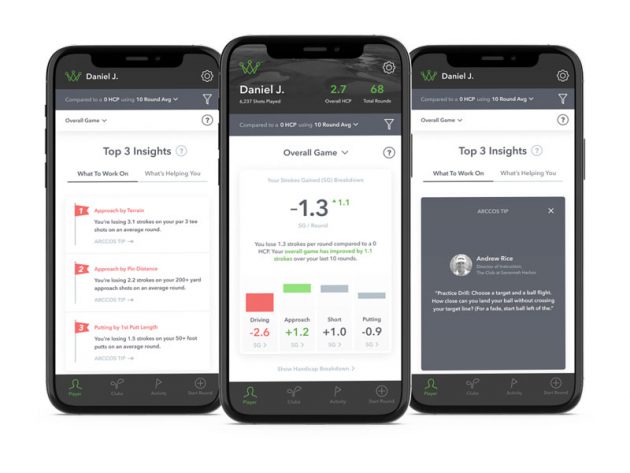
Q. How can Arccos make things easier for coaching, but also maybe a buying decision?
S: Yeah there is no doubt. In my case, if I am trying two putters and deciding which one is better, I have three rounds with one and three with the other and that provides a lot of data to show which I perform better with.
So I think in the future, when it comes to a lesson, or a purchase you are making, it has to be tied to 'is this helping me play better golf? is this helping me to improve?'
And I think this is how golfing decisions will be made in the future, and that's how decisions are made on the PGA Tour right now.
Key Strokes Gained Terms
Strokes Gained: Off-The-Tee
The measure of a player's performance with their tee shots on all par-4 and par-5 holes.
Strokes Gained: Tee-To-Green
The measure of all shots taken by a player from the tee box to the green.
Strokes Gained: Approach
The measure of performance on all approach shots. Approach shots are categorised as any shot not hit from the tee on par-4 and par-5 holes, and any tee shots on par-3s. This also doesn't include any shots on or around the green.
Strokes Gained: Around-The-Green
The measure of player performance with any shot up to 30 yards from the edge of the green, excluding any shots taken on the putting surface.
Strokes Gained: Putting
The measure of strokes gained or lost on the green, based on length of putts and likely make percentage.

Barry joined Golf Monthly in January 2024, and now leads the instruction section across all platforms including print and digital. Working closely with Golf Monthly's Top 50 Coaches, he aims to curate and share useful tips on every aspect of the game - helping amateurs of all abilities to play better golf. A member at Sand Moor Golf Club in Leeds, he looks forward to getting out on the course at least once a week in the pursuit of a respectable handicap.
Barry is currently playing:
Driver: Benross Delta XT Driver
Hybrid: TaylorMade Stealth 4 Hybrid
Irons: Benross Delta XT 5-PW
Wedges: TaylorMade RAC 60, Callaway Jaws MD5 54
Putter: TaylorMade Spider Tour
-
 Why The 16th Pin Has Been Moved From Its Traditional Spot For The Masters Final Round
Why The 16th Pin Has Been Moved From Its Traditional Spot For The Masters Final RoundThe 16th pin at Augusta National is in an different position that normal for the final round of The Masters, but why is that?
By Mike Hall Published
-
 Seve Ballesteros And Brooks Koepka Among The Big Names That Rory McIlroy Would Join As A Five-Time Major Winner With A Masters Victory
Seve Ballesteros And Brooks Koepka Among The Big Names That Rory McIlroy Would Join As A Five-Time Major Winner With A Masters VictoryRory McIlroy leads The Masters going in to the final round and, if he were to win, he would join an illustrious list of five-time Major winners
By Matt Cradock Published